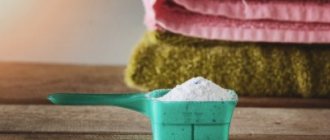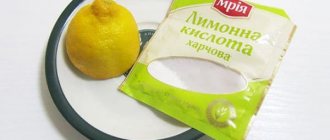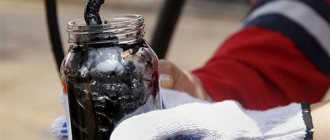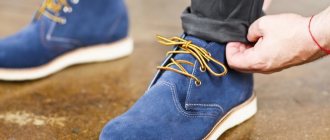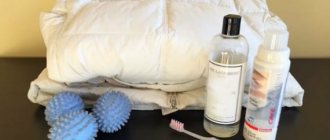Where to actually put the powder in the washing machine
The washing machine is the best assistant of the modern housewife. Breakdowns in it are comparable to the end of the world, especially in large families with children, where the mother, in addition to household duties, also works.
Often the cause of a breakdown can be simple carelessness or even absent-mindedness or incompetence.
For example, they placed the wrong detergent, and even in the wrong place, and there was a failure! Any technique requires a thoughtful and careful attitude towards itself. We’ll figure out where to actually put the powder in the washing machine in this article.
Aspirin for whitening
Store-bought bleaches contain chlorine, are aggressive and weaken the material of clothing. Aspirin is milder. Salicylic acid in its composition destroys dirt, but does not damage fabric fibers.
Grind 5 aspirin tablets and add to laundry detergent when washing. This will rid white items of grayness and yellow spots.
For old and stubborn stains, use soaking.
- Crush 8-10 aspirin tablets.
- Dissolve in 9-10 liters of cool water.
- Soak the laundry for at least 7 hours. Or leave it overnight.
- Place the items in the washing machine and wash.
The expiration date of aspirin is only important when taken orally. Use expired aspirin when washing, the effect will not decrease.
You need to be able to sort correctly
Some housewives only know that they need to sort black and white and color, but in fact this is not enough.
Photo: ©TUT-NEWS.RU
It is also necessary to take into account that products made from different materials rub against each other during the washing process. This causes clothes to wear out very quickly.
Washing sports shoes
Rules for washing sports shoes:
- Rinse sneakers and trainers by hand first. Using a thin stick or knitting needle, remove pebbles from the protectors.
- Secure your shoes by tying the laces together.
- Wash in a bag or old pillowcase. Add an old towel to your shoes. This will reduce the beating on the glass of the drum and on the insides - ribs, blades.
- Wash at 30-40 degrees, no more than 2 pairs at a time.
Shoes with white soles require more attention. After washing in the machine, scrub the sole with a melamine sponge. It works like an eraser, collects dirt on itself and wears out. Divide it into several pieces. And treat each subsequent area with a clean sponge.
Which detergent should you choose?
The choice of detergents will directly affect the efficiency and quality of the result.
Types of tulle washing products:
- Special bleaches. They cope well with stains and whiten the material of the product. Doesn't create much foam.
- Washing powder. Their choice depends on the color of the tulle - colored and snow-white products require the appropriate types of powders.
- Gel for delicate items. It washes out well and is used at low temperatures.
- Baby laundry detergent. Excellent for removing soot and grease stains, especially from white tulle.
- Gel for silk fabrics. Ensures the preservation of the fibrous structure of the product.
Sweat Stains: Lemon Juice and Baking Soda
Use to remove yellow sweat and deodorant stains from white clothing.
- Squeeze the juice from the lemon and mix with soda in a 1:1 ratio.
- Apply to the stain and leave for 15 minutes.
- Wash the item as usual.
Use citric acid instead of lemon. To do this, dissolve 1 tsp in a glass of warm water. acids. Baking soda not only removes stains, but also odors.
The method is not suitable for old contaminants. Check the armpits of light-colored items after 1-2 wears. If stains appear, get rid of them immediately, do not put it off “for later.”
Do not use lemon juice on:
- wool;
- silk;
- lace.
Acid will destroy fabric fibers and ruin the appearance of the product.
If lemon and baking soda do not remove the stain, use another mixture. Mix baking soda, dish soap and hydrogen peroxide in a ratio of 2 tbsp. l. : 4 tbsp. l. : 1 tsp. Dampen the cloth, apply the product, leave for 15 minutes. Rub and then wash as usual.
What can you do to wash your clothes if you don’t have laundry detergent?
Modern household chemicals have a highly specialized purpose: for washing floors, dishes, and laundry. And it is right. Such products contain additives that increase the effectiveness of fighting dirt in this direction. But basically all detergents are designed for cleaning and can be replaced if necessary.
If necessary, you can replace the washing powder with other household chemicals
Hand washing with household products not intended for this purpose is safer than machine washing; You need to use the machine with caution: increased foaming or the appearance of insoluble sediment on the walls - all this can lead to equipment failure. But hand washing also has its drawbacks: too aggressive substances can cause not only allergic rashes, but also damage to the skin of the hands.
Hand wash in a ziplock bag
Bed linen cannot be washed this way. But T-shirts, shorts, socks and baby clothes are easy.
- Take a bag and place your clothes in it.
- Add powder.
- Fill with water until it covers things.
- Release the air and fasten the clasp tightly.
- Shake and knead the bag. The process is similar to washing in a machine, only you are the motor.
- After washing, all that remains is to rinse the items in the bag.
The method is suitable for road conditions when there is no washing machine at hand. For example, on a hike, on a long car or train trip. Or to save money on hotel laundry while on vacation. Also in these cases, use shampoo instead of powder. And hair conditioner - instead of rinse aid.
If you don't have a ziplock bag, use a regular one. For strength, insert one into the other. Tie the edges with a knot.
Leave heavily soiled items in the bag for a couple of hours. Knead and stir occasionally.
Where to add powder in the washing machine?
The selected product should only be placed in the appropriate compartment of the household appliance.
In models from different manufacturers of household appliances, the container for laundry detergents is located and looks differently. In machines with vertical loading of laundry, the compartment is located on the inside of the hatch. Front-loading washing machines have a compartment on the top panel in the left corner.
The number of compartments in the loading tray depends on the functions. Side-loading machines usually have three of them. Vertical loading options with four cells are available. In any case, you should understand how the main working sections are designated:
- The pre-wash loading compartment is narrow and is designated by the letter “A”, Roman “I” or Arabic numeral “1”. The detergent will be used from this compartment if the washing machine is assigned a pre-wash task. In order for the double wash to have an effect, it is necessary to pour powder into the first compartment, otherwise the first wash will simply be rinsing in clean water, and the main wash with powder will begin in the second stage.
- The widest compartment for the main wash is designated by the Russian letter “B”, the English “B”, as well as the Roman “II” or the Arabic numeral “2”. This cell is loaded with detergent whenever a wash mode is selected.
- For some types of laundry, rinse aids, bleaches, softeners, conditioners and other cleaning or material softening compounds are additionally used. In most cases they have a liquid consistency. For these products, the washing machine is equipped with the smallest third compartment. It is usually marked with a flower/star “*”, or “Softener” is written on it.
If the markings on the machine are not visible
you can use the dimensions of the tray compartments as a guide.
So, let's summarize. Once you've found the tray and examined it, it's time to figure out which part is for which products. Where do you put the powder in the washing machine?
IMPORTANT:
You need to pour washing powder into the machine into the largest compartment, marked “B” or “B”, “2” or II. Liquid products or detergents in the form of shampoos cannot be poured into it!
Salt when washing brightly colored items
Salt is added for the following reasons:
- Things fade when washed. Soak clothes before washing in saline solution - 1 tbsp. l. for 1 liter of water. Or just add 1 tbsp when washing. l. salt into the drum of the washing machine.
- To keep things bright. Even if the item does not fade, over time it will lose its bright colors. Add salt when washing to prevent your clothes from becoming dull.
- To restore the color of things. In this case, you need to add salt to the rinse aid compartment. After washing, the clothes will become brighter.
All these methods do not take much time and save money on buying household chemicals and new clothes. Use our tips, and your favorite things will serve you much longer.
- Author: iarriba
Rate this article:
- 5
- 4
- 3
- 2
- 1
(3 votes, average: 5 out of 5)
Share with your friends!
Natural laundry and cleaning products.
People often ask what to wash clothes with, what to wash dishes with? I experimented for a long time and found a universal remedy. A cheap remedy.
Attention, this is SODA!
Soda for everything: I wash dishes with it, it squeaks after washing like that. Baking soda does not scratch the surface of the dishes. It is absolutely harmless to the OS. For soil, for example. If you wash dishes in the country, then baking soda is even good for the earth! I washed the bathtub with Domestos and other modern cleaning products for a long time. Sound familiar? And to achieve results, it was necessary to work hard. When I first started cleaning the bathtub with soda, I thought that now I would be tired of working with my hands. Nothing like that, soda seems to corrode all the dirt! It now takes me less time to clean the bathtub than before! I also use natural sponges. I sewed it from terry fabric measuring 12 by 12 cm in two layers. Previously, I used regular sponges, where one side is rough. It was this side that was needed to wipe off the dirt. But always, throwing out another sponge, it was a pity to litter nature. Now I use 100% cotton terry sponges, which are machine washable as needed. And soda acts as a rough layer))))
Wash
: Washing is very easy.
At first I washed with soap nuts, but they stain light-colored clothes... brownish... I had to look for another product. Thanks to common sense and smart people, I realized that modern eco-products are nothing more than ordinary chemical detergents for washing and washing, only in lower concentrations. For example, such well-known products as Ecover, Amway, contain chemical and carcinogenic (!!!) substances. We read the labels: you don’t even have to go far, it contains surfactants.
What are peahens?
These are synthetic compounds. Synthetic, i.e. chemical. What is chemistry? That's right - this is not natural at all. Next: preservatives, fragrance
. Hm. Do you smell that smell of deception? They sniffed us an old chemical powder, only in less concentration.
Someone will say quite truthfully: “They created a tragedy, in eco-products, the concentration of chemistry is minimal! My mother waters flowers with water from this product!”
And here is the first mistake: any chemistry (I will even emphasize) - any chemistry does not have the ability to be eliminated from the body, it can, of course, be eliminated, but not all of it, and not at once. Chemistry ACCUMULATES in the body. And if you water your flowers and they still grow. Just wait a while: they are still growing, until
... If you continue to water them in the same spirit, they will die. Do you need experiments? Why, look around, you already install them every day!
Mistake two: chemistry in lower concentrations does not cease to be chemistry! The chemical gets on the fabric (washing powder), it is not washed or rinsed. It enters the soil with water. It doesn't decompose. It accumulates and kills living things. I am already silent that with things, in contact with the body, it enters the cell membrane (under the skin, in other words) and continues to act there. Again, unless you suffer from eczema, the accumulation threshold has simply not yet reached the desired concentration. Do we have many allergies? What about 100 years ago? How about 150? The concept of allergy did not exist then! Allergies were born with the development of chemistry.
So, if there is only poison all around the universal conspiracy, what to wash it with?
I found my universal remedy: I put 2 tsp directly into the drum for washing. soda All. If you wash cotton, after a few washes you will be pleasantly surprised: cotton smells like cotton! Remember that divine smell of fresh organic cotton purchased? So, the smell of your old cotton clothes will come close in this!
If I wash white clothes:
I put 2 tsp. soda + 1/3 lemon. I cut off the lemon, straight with the skin. I put it in a washing net and wash it at high temperature. After washing, the laundry smells like a subtle, wonderful scent of lemon. We throw out the skin and cake from the mesh. Lemon has a pronounced whitening effect. Removes stains well.
For washing wool
I use laundry soap. But no additives. Regular natural dark soap with a distinct scent. I revived the natural wool that I had left over from the older one and had already turned yellow/gray and stained. We rub the wool well with soap, we are not afraid, in three places of contamination (I even scrub Dizanov wool, who knows, this is a very capricious wool), then we squeeze the whole thing with our hands and rinse. Until the water turns from white to clear. All! My natural woolen items have become perfectly clean! All stains, even old ones, have disappeared!
You can, of course, use many other natural remedies (mustard, bread crusts, etc.). But this method suited me perfectly.
Important: it is absolutely harmless! It's very economical! You all know, yes, how much does a bag of soda and household soap cost? So there is a healthy alternative, and, in my opinion, stop using advertised products. They are never eco. Eco is what gives life, brings us back to life! Go natural!
Effect on clothing and water
At first glance, it may seem that washing clothes with simple laundry soap has only positive aspects: naturalness, absence of harmful chemicals, good results at a low cost. But it can harm not only the washing machine, leaving a greasy residue on its parts, but also some types of delicate fabrics.
You can protect your clothes and washing machine from the negative effects of washing with this product by following simple recommendations:
- soap consumption should be 30 g per 10 liters of water;
- You can wash it with laundry soap in a machine at a temperature of no more than 70°C, and optimally at 40°C.
Also, when calculating the required amount, you need to take into account that softening hard water will take about 30% of the total amount of soap. Therefore, in order not to increase its amount, soda is added to the water as a softener. You can visually understand how hard the water is by lathering soap in your hands under running water. Poor foaming indicates high water hardness.
Laundry solid and liquid laundry soap is a time-tested product that many housewives like to resort to. You can use it in a modern washing machine, but you need to do it correctly. Then the washed items will delight you with their cleanliness, and the machine will serve you well for many years.
Features of washing tulle in a machine
Having completed the preparation and made the choice of cleaning product, you should proceed directly to the washing process itself.
The first thing you should pay attention to is the water temperature. It should not exceed 40 degrees, since a higher value can lead to damage to the delicate material from which the tulle is made. The main problems in such cases are: deformation of the fabric, yellowing that cannot be removed, and the formation of lumps on synthetics.
Setting the program on the washing machine, as well as the temperature mode, must meet the following conditions:
- Intensive washing is not necessary, since the structure of the tulle fabric makes it easy to remove dirt from the fibers.
- There should be no time limit. The longer the process, the better the dust is cleaned due to better soaking of the tulle.
- To avoid yellowing of the material caused by detergent residues on the fabric, it is necessary to add an additional rinse.
- It is not necessary to install a spinner, since washing without it will allow you to avoid ironing the tulle before hanging it. In addition, this type of cleaning eliminates high drum speeds, which reduces the likelihood of damage to thin and delicate materials.

